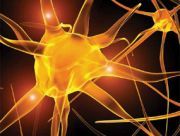Article
Potential New Target for Neuropathic Pain Therapies
Author(s):
Researchers have identified a compound that reduces the levels of a key enzyme that regulates activity in pain receptors, pointing the way to new therapies for treating some forms of back pain, shingles, and other types of chronic neuropathic pain.

Researchers have found a potential new target for treating some forms of back pain, shingles, and other types of chronic neuropathic pain.
A team of researchers at the University of North Carolina School of Medicine recently announced that reducing the levels of the enzyme PIP5K1C also reduces levels of PIP2, a lipid in pain-sensing neurons, leading to a decrease in pain.
They also announced that they have identified a compound (UNC3230) that can “dampen the activity” of PIP5K1C.
A news release that accompanied publication of the study results noted that “the compound might be able to significantly reduce inflammatory pain, such as arthritis, as well as neuropathic pain,” such as that seen in conditions “such as shingles, back pain, or when bodily extremities become numb due to side effects of chemotherapy or diseases such as diabetes.”
The team found that PIP5K1C kinase was “expressed at the highest level in sensory neurons compared to other related kinases,” and used a mouse model to show that “PIP5K1C was responsible for generating at least half of all PIP2 in these neurons.”
“That told us that a 50 percent reduction in the levels of PIP5K1C was sufficient to reduce PIP2 levels in the tissue we were interested in — where pain-sensing neurons are located,” said lead researcher Mark Zylka, PhD, Associate Professor of Cell Biology and Physiology.
Zylka and colleagues published their findings in Neuron, in an article titled “The Lipid Kinase PIP5K1C Regulates Pain Signaling and Sensitization.”
In their summary of these results, the authors noted that “phosphatidylinositol 4-phosphate 5 kinase type 1C (PIP5K1C) is expressed at higher levels than any other PIP5K” in nociceptive dorsal root ganglia (DRG) neurons, and that it “generates at least half of all PIP2 in DRG neurons.”
Because PIP5K1C haploinsufficiency “reduces pronociceptive receptor signaling and TRPV1 sensitization in DRG neurons as well as thermal and mechanical hypersensitivity in mouse models of chronic pain,” inhibiting the enzyme “lowered PIP2 levels in DRG neurons and attenuated hypersensitivity” in test mice.
These results demonstrate that “PIP5K1C regulates PIP2-dependent nociceptive signaling and suggest that PIP5K1C is a therapeutic target for chronic pain,” wrote the authors.


